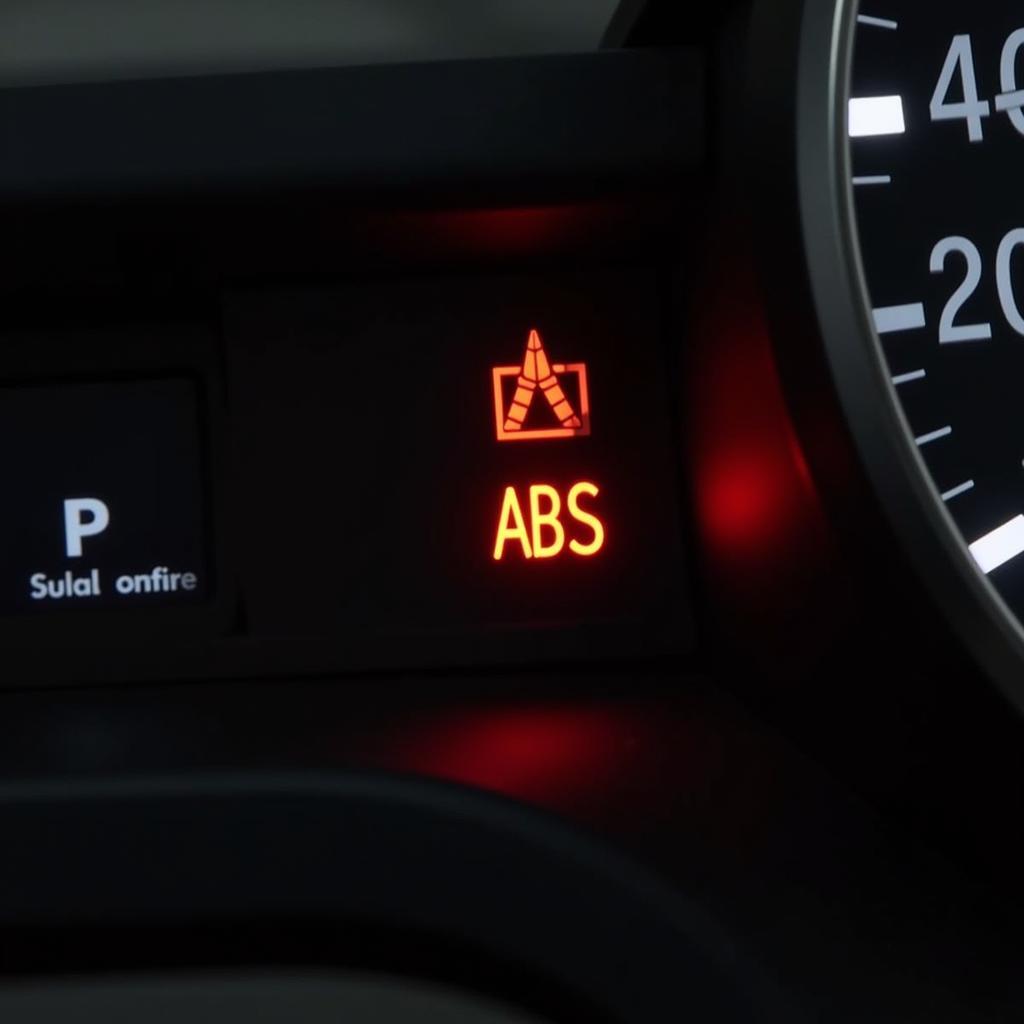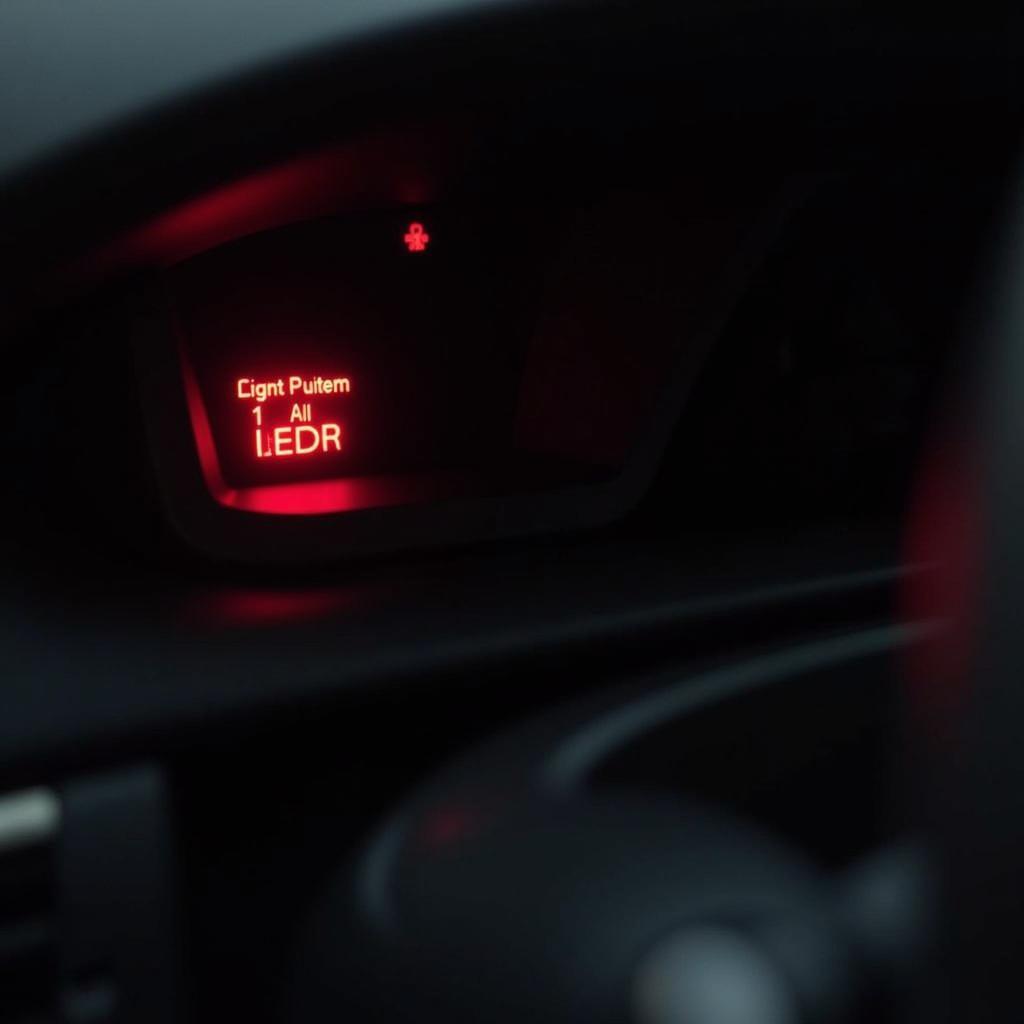The antilock brake system (ABS) warning light is a crucial indicator of potential issues within your vehicle’s braking system. Ignoring this warning can compromise your safety and lead to costly repairs. This comprehensive guide will delve into the common causes, diagnostic procedures, and solutions for an illuminated ABS warning light, empowering you to address this issue effectively.
As a specialist in automotive electrical engineering with expertise in remote diagnostics, programming, and software installation, I regularly encounter ABS warning light issues. This article aims to provide you with the knowledge and tools to understand and address this problem, ensuring your safety on the road. my brake warning light comes on intermittently often signals an issue within the ABS.
Understanding the Antilock Brake System (ABS)
The ABS is a safety feature designed to prevent wheel lockup during hard braking, allowing you to maintain steering control and avoid skids. It works by monitoring wheel speed sensors and modulating brake pressure to prevent the wheels from locking. A malfunctioning ABS can significantly impact your vehicle’s handling in emergency braking situations.
Common Causes of an Antilock Brake Warning Light
Several factors can trigger the ABS warning light. These range from simple issues like low brake fluid to more complex problems with the ABS control module.
- Low Brake Fluid: One of the most frequent culprits is low brake fluid. This can indicate a leak in the braking system, which requires immediate attention.
- Faulty Wheel Speed Sensors: These sensors play a vital role in the ABS operation. A damaged or malfunctioning sensor can disrupt the system and illuminate the warning light.
- ABS Control Module Issues: The ABS control module is the brain of the system. A malfunctioning module can cause a range of problems, including an illuminated warning light.
- Damaged Wiring: Wiring issues, such as corrosion or breaks in the wiring harness, can disrupt communication within the ABS and trigger the warning light.
- Blown Fuse: A blown fuse in the ABS circuit can disable the system and activate the warning light. what mm for brake warning helps determine the fuse size.
 ABS Warning Light on Dashboard
ABS Warning Light on Dashboard
Diagnosing the Antilock Brake System Warning Light
Diagnosing the exact cause of the ABS warning light typically requires specialized diagnostic tools. These tools can read the fault codes stored in the ABS control module, pinpointing the source of the problem. antilock brake warning provides further details on this process.
Using a Diagnostic Scanner
A diagnostic scanner can retrieve specific fault codes related to the ABS. These codes provide valuable insights into the nature of the problem.
Checking Brake Fluid Level
Visually inspect the brake fluid reservoir. Low fluid levels often indicate a leak in the braking system.
Inspecting Wheel Speed Sensors
Visually inspect the wheel speed sensors for any signs of damage or debris. A multimeter can be used to test the sensor’s functionality.
“Regular maintenance, including brake inspections and fluid checks, is essential for preventing ABS issues,” advises John Miller, a seasoned automotive electrical engineer with over 20 years of experience.
Fixing the Antilock Brake System Warning Light
The specific fix for an illuminated ABS warning light depends on the underlying cause. Simple fixes, like topping up brake fluid or replacing a blown fuse, can be performed by most car owners. More complex repairs, such as replacing a wheel speed sensor or the ABS control module, often require professional assistance. common cuase of antilock brake warning light explores these common issues in detail.
Replacing a Wheel Speed Sensor
Replacing a faulty wheel speed sensor involves removing the old sensor and installing a new one. This procedure can vary slightly depending on the vehicle make and model.
Addressing ABS Control Module Issues
If the ABS control module is faulty, it may need to be replaced or reprogrammed. This requires specialized equipment and expertise.
Repairing Wiring Issues
Damaged wiring needs to be repaired or replaced to restore proper communication within the ABS.
“Addressing ABS issues promptly is crucial for maintaining the safety and reliability of your braking system,” emphasizes Sarah Johnson, a certified automotive technician with extensive experience in brake system diagnostics and repair.
Conclusion
The antilock brake system warning light serves as a vital safety alert. Understanding its implications and taking appropriate action is essential for maintaining a safe and reliable braking system. Addressing the issue promptly can prevent further damage and ensure your safety on the road. antilock brake warning light provides more information. Don’t ignore this crucial warning—take action to diagnose and resolve the problem to ensure your safety and the proper functioning of your vehicle’s braking system.

